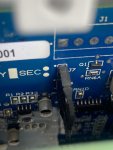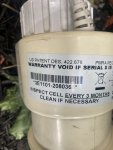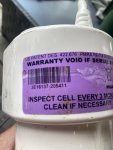- Jun 13, 2013
- 224
So, my old Intex SWG was failing (I jumped on that bandwagon a few years ago and it served me well) so I decided to replace things with a more proper Hayward system.
I found some great deals online for used hardware and picked them up a few days ago - a Hayward T3 described as basically brand new by the seller (bought a cell far too small for his pool and it's just been sitting in his shed for a few years afterwards) after replacing with the proper size cell. It does indeed look brand new but I had to take him at his word.
Picked up a controller elsewhere. Verified it was working at pickup, it was still fully hooked up and generating just fine. The guy went out of his way to make sure he could demonstrate it working and everything when I came for pickup and I actually unhooked it all myself.
Bring it all home and did the install today. It was at this point I discovered the controller is an old software version (v1.45) that doesn't allow you to set the cell size.
Unit fires up and generates for a few minutes then trips off with a "Check salt" and "check cell" solid lights.
Have I, in typical Murphy's Law fashion that I'm so famous for, managed to put together an incompatible combination?
I found some great deals online for used hardware and picked them up a few days ago - a Hayward T3 described as basically brand new by the seller (bought a cell far too small for his pool and it's just been sitting in his shed for a few years afterwards) after replacing with the proper size cell. It does indeed look brand new but I had to take him at his word.
Picked up a controller elsewhere. Verified it was working at pickup, it was still fully hooked up and generating just fine. The guy went out of his way to make sure he could demonstrate it working and everything when I came for pickup and I actually unhooked it all myself.
Bring it all home and did the install today. It was at this point I discovered the controller is an old software version (v1.45) that doesn't allow you to set the cell size.
Unit fires up and generates for a few minutes then trips off with a "Check salt" and "check cell" solid lights.
Have I, in typical Murphy's Law fashion that I'm so famous for, managed to put together an incompatible combination?




